If you have a Symmons Temptrol shower valve installed in your bathroom, then don’t worry, it can last for more than a decade. But sometimes, a miscalculated installation or leaked water connection might end up reducing the lifespan of your shower valve. You can find the Symmons shower valve hard to turn after a few months because of those reasons.
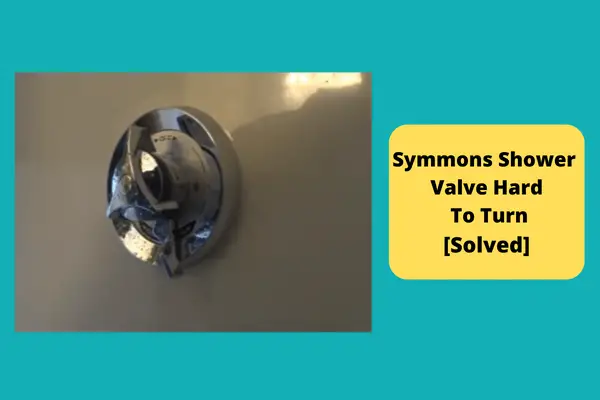
A valve becomes stiff when mineral deposit layers in the construction are thick enough to obstacle the valve or handle movement, or you’ve tightened the screws and spindle too much. Either way, you can clean, lubricate, and reinstall the whole setup to make the handle movement smoother.
Whatever the reason for a hard valve knob is, the solution is never a hard nut to crack. There’s no need to think of replacing a valve or handle just because it’s stiff. You can spend a few bucks to make the old valve work again, and save the cost of buying a new one.
Table of Contents
Symmons Shower Valve Hard To Turn [3 Easy Fixes]
Many might say when the shower handles become old, they surely turn stiff and hard to move. Actually, this isn’t true at all. No matter how old a shower valve is, you can always fix it to work like before if it hasn’t been broken. So, let’s see the main three reasons why shower valves become stiff.
Note: You can also read the Tuscany Shower valve troubleshooting guide.
1. Mineral Deposit
Often, due to years of use, minerals, especially calcium from the raw water supplied by the line can get deposited around the valve and faucet. The key reason for the heavy mineral deposits is several leakages in the connection.
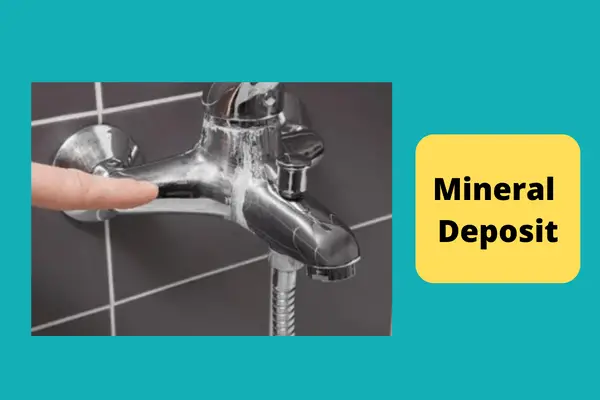
Either you’ve kept the connection loose or the water pressure is too much for the valve to handle and the water keeps leaking from the joints.
Whatever the reason is, the wet condition around the valve and shower cartridge allows calcium and rust to build up. It leaves no space for the valve to move smoothly.
How To Fix A Stiff Shower Handle & Valve With Calcium Deposit
Things You Need:
- A screwdriver,
- A Wrench,
- Edible vinegar,
- WD40
- A brush or metal scrubber, and
- Plumber’s tape if needed
Step By Step Solution:
Step #1: Turn off the water connection of the bathroom. Then turn on the taps and faucet inside the bathroom to release all the water stored in the pipes.
Step #2: Next, Put off the caps or other decorative stuff over the shower and reveal the main screw attaching the valve and handle.
Step #3: After that, use a screwdriver to bring out the main screw. It’d detach the handle from the wall. In some cases, you might have to twist the whole handle using a wrench to pull out the handle.
Step #4: If you’ve revealed the valve by putting off the handle, the main work starts now. Bring out the cartridge from the construction. You can see greenish layers over the cartridge. Put it in a bowl filled with warm water and vinegar mixture (1:1). Scrub the cartridge gently with a metal scrubber.
Step #5: Now, take another bowl of vinegar mixture and use a brush to apply the mixture over the valve construction inside the wall. Rub each corner well until the greenish or blacking deposits don’t wear off.
Step #6: When done cleaning, put all the parts back where they should be. Don’t forget to spray some WD40 over the threads of screws, handle, and cartridge to make swift movements.
Step #7: Finally, after reinstalling, check the handle or knob by twisting with moderate force if things are okay or not.
2. Overtight Installation
Is your new shower valve hard to turn? Then, it’s surely the fault of improper installation. Sometimes, new DIY plumbers tighten the screws and knobs way too much to make the construction sturdier. But in reality, the knobs and handles need to be flexible enough for even a child to turn with ease.
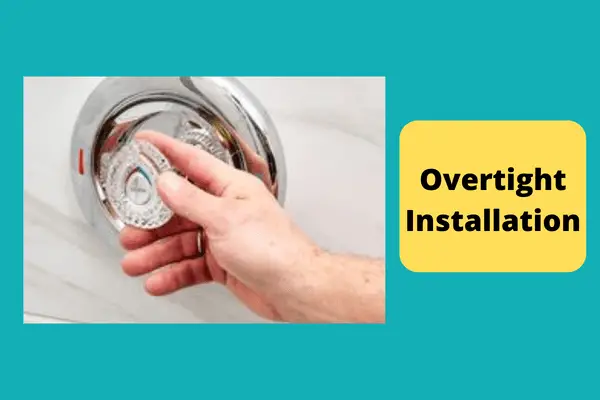
However, as you’ve already overtightened the valve in the installation, the only thing left for you is to reinstall and loosen the construction a bit.
How To Loosen A New Shower Valve
Things You Need:
- A screwdriver,
- WD40,
- Plumber’s tape, and
- A wrench
Step By Step Solution:
Step #1: First of all, you’ve to shut down the water supply and empty the pipes.
Step #2: Take off the caps and other exterior parts by pulling or twisting with the wrench. Then, use a screwdriver to take off the screws. But don’t twist the screws too hard to avoid stripping.
Step #3: Separate the handle, cartridge, and frame from the wall. At this point, it’s time to know how to lubricate shower valves. Spray some WD40 over those parts and threads inside the valve. You can also wrap the cartridge with a thin layer of plumber’s tape to eliminate friction and deposit.
Step #4: Now, reinstall all the stuff. Properly tighten all the screws and joints except the cartridge and handle. Keep them a bit looser than other threads. Test them by twisting with your hands while reassembling.
3. Broken Or Corroded Components
What if any of the valve’s components are broken or cracked? What can you do in this situation? Any part of the valve can get some damage when the water pressure of your home is higher than required. The pressure can make cracks within a year or two.
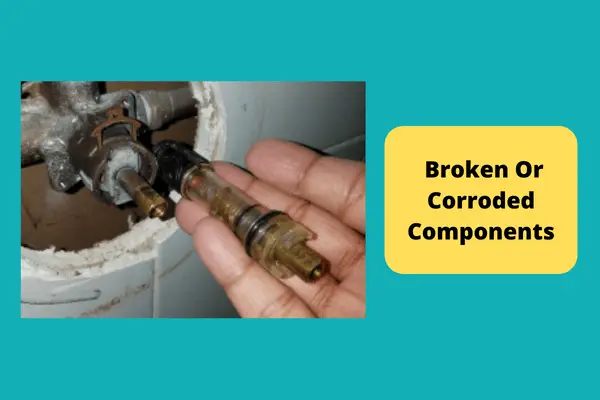
Also, heavy water can make the interior and exterior of the valve rusty. Rusty metals break easily. Broken or corroded valve components lose their shape. Because of that, the valve becomes hard to turn.
Sometimes, the corroded particles also jam the movement of a smooth knob or handle. Here, the solution is to replace the part with a new one to make the shower set work as usual.
How To Inspect And Replace A Valve Component
Things You Need:
- Cleaning mixture,
- A screwdriver,
- A wrench, and
- OEM parts to replace damaged parts.
Step By Step Solution
Step #1: From the previous troubleshoots, you’ve known how to remove stuck Symmons shower valve cartridge and handle. By using that knowledge remove the cartridge, screws, and knob gently.
Step #2: Then, close the hot and cold water output with a screw. When they’re closed, take out the valve also.
Step #3: Inspect every component and see if any of the parts are both damaged and irreparable. You can find shower valve parts separately from any sanitary store. Purchase new ones to replace broken or stripped components.
Step #4: But don’t replace those that you can repair. For example, you can always clean a rusty cartridge or housing and cover them with tapes to use again.
What Happens If You Use Stuck Shower Valves
The key problem of having a stiff or stuck shower valve is you can’t turn on or off the shower faucet precisely. You’d find it hard to turn on the shower and relax a bit after hours of working outside.

Besides, water dripping from the output is a very common issue when the shower valve is hard to turn. Valves with calcium deposits inside can’t allow a complete twist or shift of the handle. Thus, water always flows from the faucet and keeps your bathroom messy.
And the worst thing you can face is having any of the hot or cold outlets stuck. A single-handle shower with two water outlets has only one valve and a cartridge inside. So, if the handle becomes stuck, there’s a possibility of any of the outlets is going to be off until you fix the valve.
FAQs:
Why is my faucet handle so hard to turn?
Mainly, the mineral and grit deposit can make a faucet handle hard to turn accordingly. Dismounting the handle and cleaning them using an acidic mixture can fix the hard faucet handle.
How do you lubricate a shower valve?
If you don’t want to open up all the handle parts, then simply bring out the handle and use a thin nozzle sprayer to insert the lube. You can also bring out the valve and apply some lube thoroughly if you want.
Why is my shower diverter hard?
Your Diverter becomes hard when too much dirt, grit, and minerals start to build up around it. You can either change the old valve or soak the diverter’s inner parts in a making warm vinegar mixture to clean things.
Should you grease a shower cartridge?
It is allowed to grease the shower cartridge to make the handle movement smoother. But you can’t apply an excessive amount of grease or lube over a cartridge.
Can I use Vaseline as plumbers grease?
Vaseline is a great lube, but not for plumbing. The rubbers used in the taps and faucets aren’t well-compatible with Vaseline. Vaseline makes rubber stiff. That’s why avoid using vaseline.
Summary
So, that’s all about hard Symmons shower valve troubleshooting. Hiring any plumber to fix a stiff valve isn’t necessary at all. You can handle the issue all by yourself.
The most possible reason for a stiff shower valve is mineral deposits, that you can solve without any hustle. But when you see no way the valve is getting fixed, you better look for a new shower valve as quickly as possible.
If you need any information regarding changing your shower valve, feel free to reach out anytime.

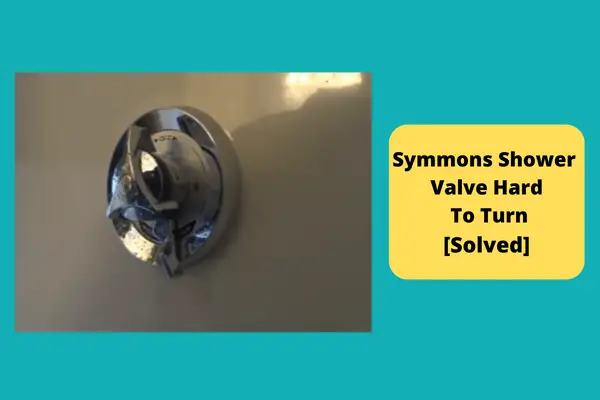

About James
James founded HomeUpgradeLab & was sharing his experiences to fix issues related to bathroom and toilet fixtures & fittings. Read to know more about James Hill & how he started this blog.